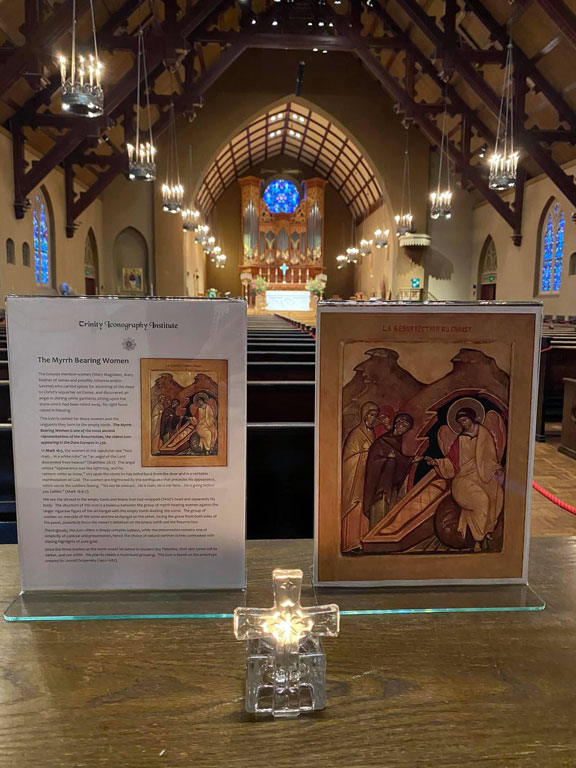
In November we paused all iconography-related work in light of COVID concerns during the holidays, until this week’s return to plan the path toward the icon’s completion.
January 27, 2021
After remaining untouched for two months, the board readily absorbed pigment. We applied several Verdaccio Scuro “puddles” over the mountains to begin moving toward the final tones. Students applied many foundational colors to the entire board and now puddling ties colors together. “Puddling” pigment in the form of a lake, unifies the various colors that have been applied underneath. The icon still looks very bright, as it should, because the colors you see now are there to provide the hue of the more muted tones of what they will finally become.
We focused on beginning to distinguish different shades of green today. Applying puddles requires significant drying time because of the amount of water used, thereby limiting the work that can be accomplished in one session.
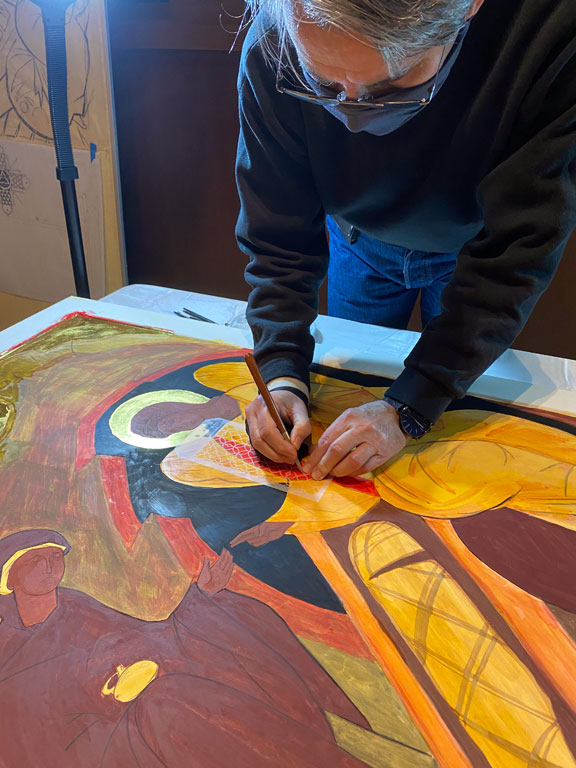
The Angel’s red “Clavis” is a band on the sleeve of a garment that signifies an individual’s importance. Clavi (pl) were two stripes in the honorific colors of either red or purple applied from the collar to the the hem of Roman and Byzantine garments typically worn by emperors and other distinguished Roman officials. In iconography, the Clavis is shown on garments worn by Jesus Christ, angels and apostles. Today, Father Jon used a pointed Italian burnishing tool with a polished agate tip to gently carve a beautiful pattern onto the angel’s red clavis.
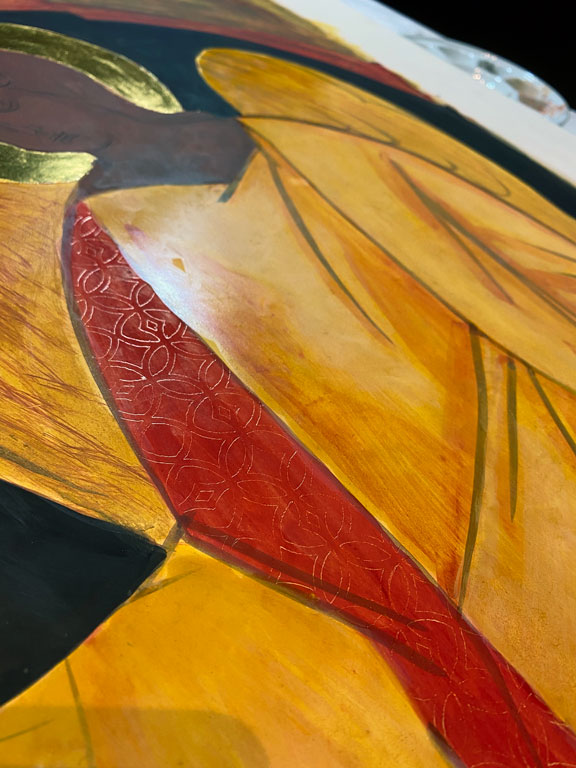
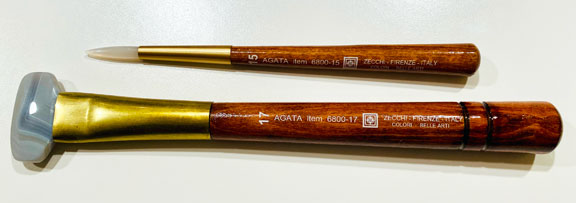
Here are two examples of agate burnishing tools we use in iconography. As you can see, the tip is an actual beautifully smooth, polished agate. Father Jon is shown in the above photograph using the pointed agate burnisher to gently carve the clavis pattern. After we apply shell gold embellishments to the icon, we’ll use an agate burnisher like the flathead tool, to burnish the shell gold to a dazzling shine.
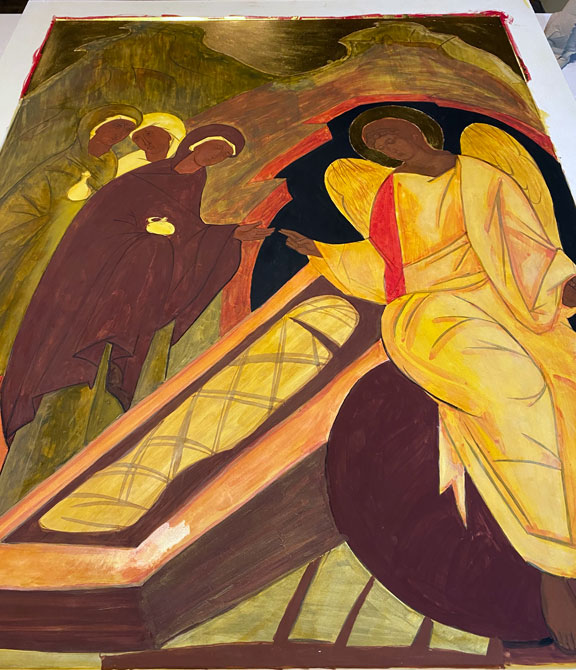
Masses are color separations that help create dimension and expression in iconography. This process begins with the application of a dark flesh tone comprised of Verdaccio scuro (green), Red Ochre (red), and Italian Warm Ochre (orange brown) called “Sankir” in Iconography. This is the basis of the flesh tone to which progressively lighter, smaller separated sections are applied. Creating a face typically uses a total of only five different pigments. This week, we began the creating “masses” or facial separations on the angel, applying them also to the hands and feet (any skin surface). The masses may not be completely noticeable yet, as it takes multiple layers for the dimension to evolve and we are only on the third step of a 13-14 step process.
We applied a puddle of Verdaccio chiara (light green), which is actually an earthy greenish gold to the Mary furthest from the Angel (to the far left holding an urn), as her garment will slowly transform from the current dark green to a lighter gold with greenish under tones. To unify the composition, the same Verdaccio chiara was applied to the vermillion undergarment, which will eventually become a red brown.
January 28, 2021
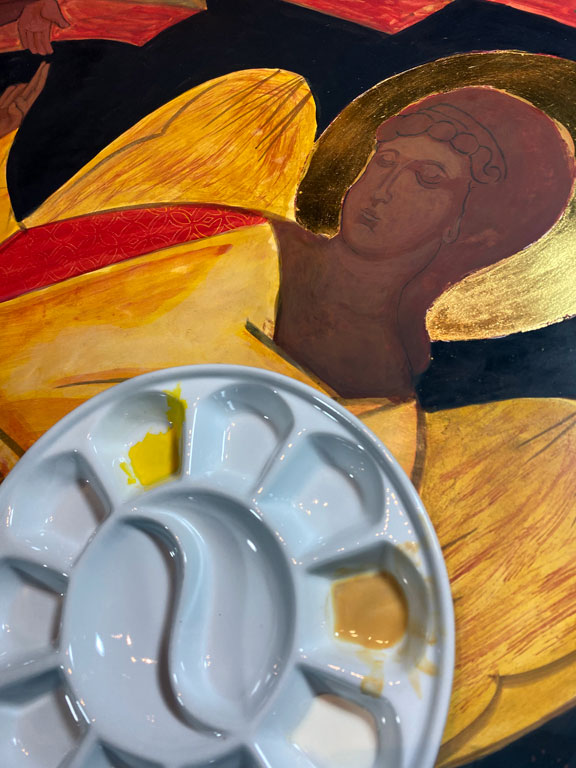
As you can see in the palette above, at about the 10:00 position we have a bright yellow (Cadmium Yellow Medium) and in the 2:00 position is a natural yellow ochre. Ochres are natural earth with a characteristic muted quality. The intensity of the cadmium yellow was needed for brightening highlights on the angel’s garment, while the natural, muted yellow ochre is a foundational color of the masses, described above.
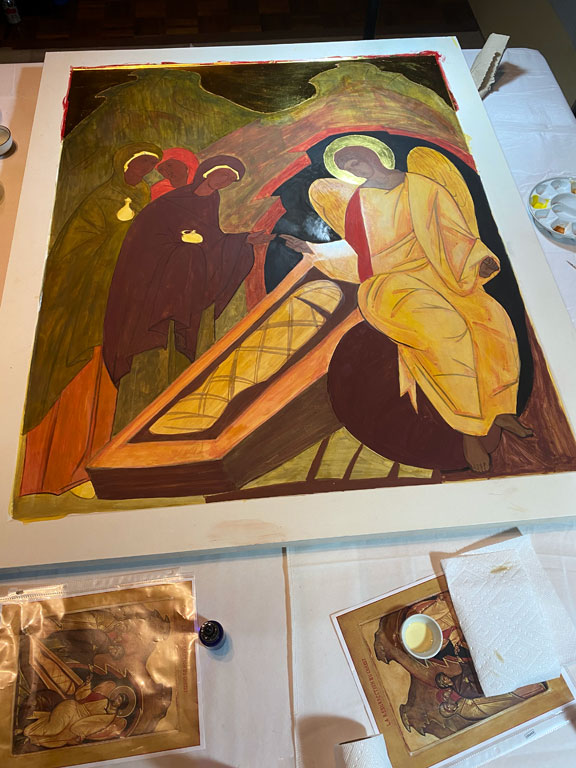
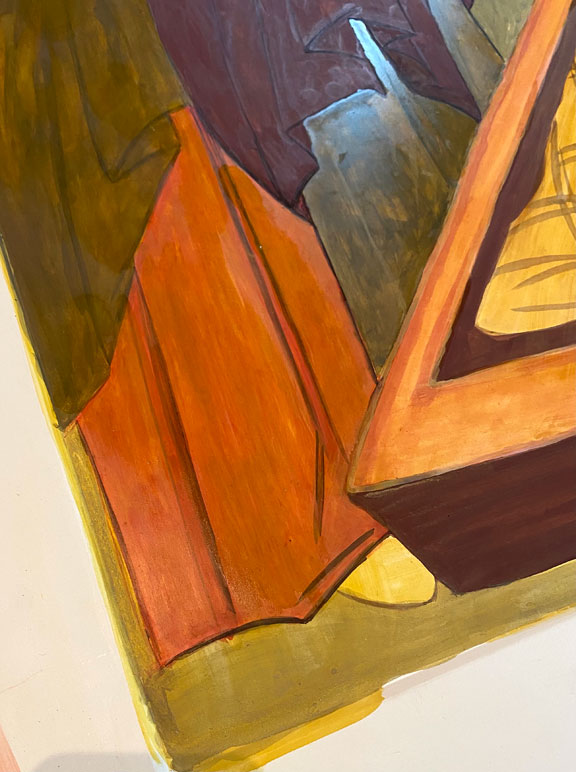
Last week, this garment was a vibrant vermillion. As lovely as it was, vermillion is the foundation of what this garment is to become – a more muted, humble red-brown. Today, we applied several washes of Verdaccio chiara (light golden green), also an earth, or ochre. The second Mary (in the middle) received an initial application of Cadmium Red Medium, which will highlight her and harmonize her garment with the angel’s clavis.
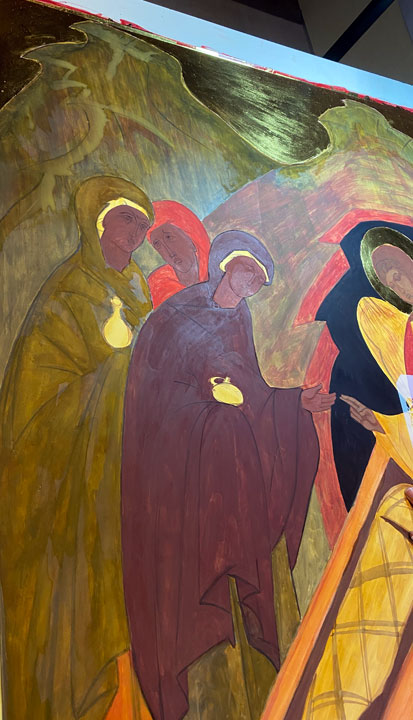
With each successive wash, the third Mary’s garment is transforming into a new color, as are the mountains.